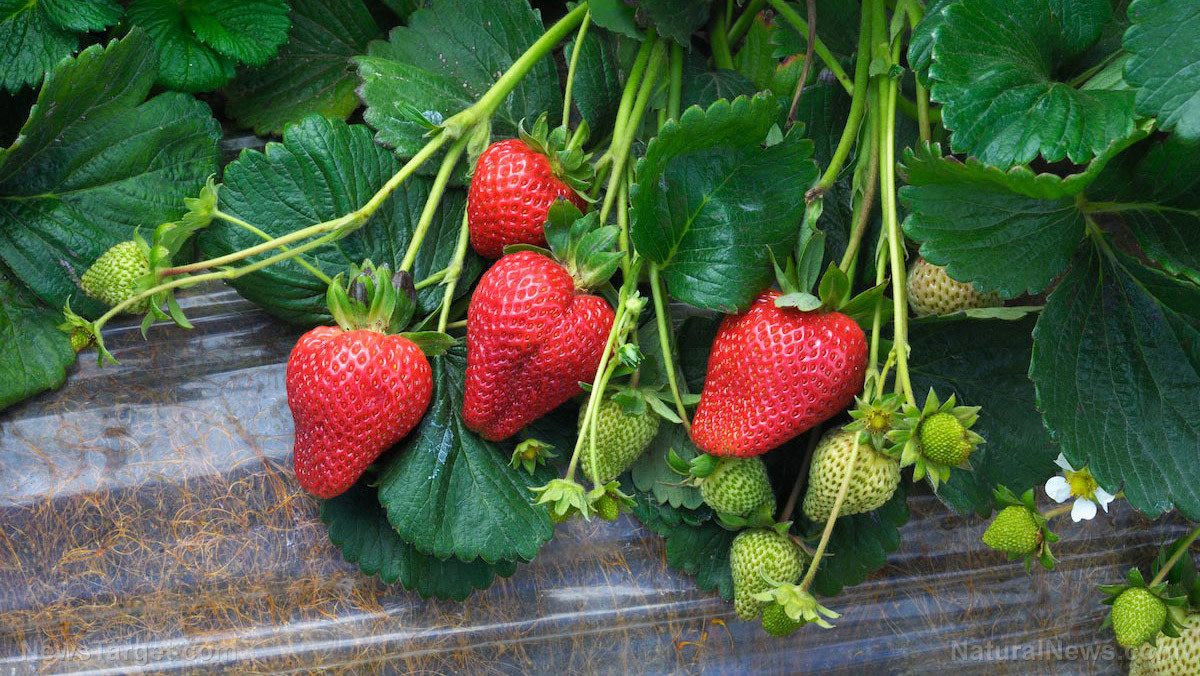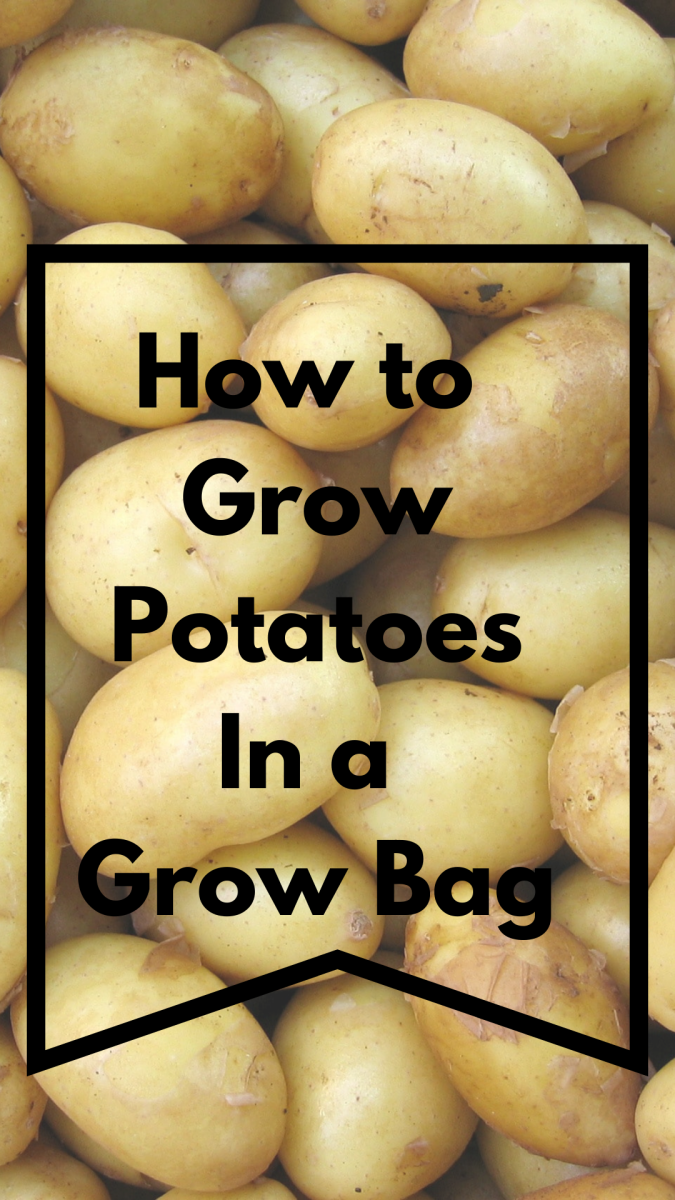White Alpine Strawberries
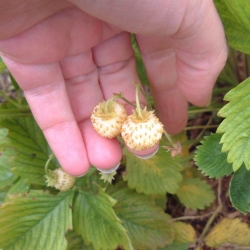
An edible garden experiment!
In the spring of 2008, I planted my first white alpine strawberries in my garden. This lens will tell you more about this special varietal and share my experiences with this delicious fruit! These berries have some distinct differences from regular strawberries: they are non-invasive and ever-bearing!
See photos of my growing berries, get gardening tips and suggestions and find where to get your own strawberry plants.
2012 Notes: The funky spring and summer weather led to the plants getting off to a very late start, but I found myself with late summer and early fall berries instead of the usual mid-summer. They were just as delicious! The ones I had in pots did a lot better than the ones I had in the ground. There will be some investigation about this over the winter and it would seem a different berry strategy may be called for in 2013...
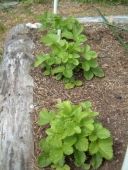
The Lure of the White Strawberry
the story of why I chose to grow this type of strawberry
Many years ago, I had a roommate who grew white strawberries. She had about half a dozen plants in little pots. They made teeny, tiny berries but they were awfully cute and very tasty.
In the spring of 2008, I signed up for an edible garden tour that a woman from our local sustainable garden group was hosting. We saw a private, household garden that is owned and maintained by a woman who does landscaping for a living. Her garden is set up to be easy to maintain so that she doesn't have to do a ton of gardening for herself after a long day of doing it at work. And since she's limited on space and loves good things to eat, a lot of what she gardens is edible. She had many interesting berries, a great composting system and even keeps a few chickens.
But one thing that really stuck with me was her white alpine strawberries. She talked about how alpine strawberries AREN'T invasive, as they don't produce by making runners like more conventional strawberries. She said the pale color tended to "fake out" the birds and critters who don't think the berries are ripe, so she loses less fruit to the animals in her yard. And they are "ever-bearing" which means they make fruits all summer and into the fall instead of just one large crop in late spring or early summer.
I was SOLD! I decided I had to give growing my own white alpine strawberries a try in my own garden.
(shown here, what the alpine strawberry starts look like after they've been in the ground for a few weeks)
About Alpine Strawberries - more info on what makes alpine strawberries different
Alpine strawberries come in red, yellow/gold and white colors. They are all similar to grow, but each will have its own distinct flavor variations. The whiter or yellow berries are sometimes said to have strong suggestions of pineapple flavor.
- Root Cause » White Alpine Strawberry
Here's a plant I remember from my childhood. We had a few of these growing in my backyard, but for some reason they grow much better in a pot on my roof now. They are really tasty! These are smaller than modern strawberries, but the flavor is very in - White Alpine Strawberry
The fragrance reminds us of strawberries, and our noses are right on track because our garden path is lined with the Alpine strawberry. - New York Times Article - Alpine Strawberries
CUTTINGS; Summer's Plump Little Success Story, Published: June 22, 2006 I HAVE been grazing on the Alpine strawberries in my walled perennial garden every day for almost two months now. Some mornings, I take out a bowl of granola and milk, pluck a do - Tiny strawberries smell sweet, taste like pineapple
I started my golden Alpine strawberries from seed. For the first few weeks, success wasn't at all certain. The seeds weren't much bigger than specks of dust, and the directions said germination could take four weeks. After 2 1/2 weeks only one seedli
Getting Started with Alpine Strawberries - finding seeds and plants to begin growing
These are best started in the late winter or spring if you are going to grow outside, but if you have a greenhouse, you could probably start them any time of year.
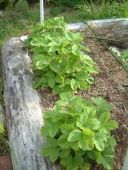
Planting My White Strawberries
the gardening process begins....
I decided to get plant starts (baby plants) to get my strawberry patch going. I called around to the nursery and garden centers near where I live and found one that would be getting organic white alpines in stock. I put in an order for half a dozen starts.
My starts arrived at the garden center in mid-May and they called me to come pick them up. The variety I have is called "Alba Dolce" and were organically-grown by a local grower. The tag that came with the plants says:
"This heirloom Italian Alp variety is one of our favorite part shade edible landscape plants. They produce beautiful white, fragrant and sweet berries their first year and ultimately grow to a size of 18" wide and 10" tall. Year round visual interest."
I put the plants into my garden in two batches of three. One trio is in the ground in the front of one of our flower beds and the other is at one end of a raised bed where vegetables are grown. Both areas get a mix of sun and shade and should allow enough room for the plants to grow to full size without getting crowded.
As with all newly-planted starts, I water them in the mornings when we don't have any spring rains. Also my readings on growing alpines suggested that I pick off all flowers from the plants through the end of June and then let them go. This is so that the plants put all their energy into growing the main plant and getting well-established before they turn to the tasks of flowering and fruiting. After two weeks in the ground, a few of them started to make flowers.
(Shown here are the strawberry plants that are in the raised bed, photo taken in late June. If you compare with the picture in the first module, you can see they've really grown in size!)
Growing and Gardening Alpine Strawberries - how-to for Fragaria vesca
Here are links to articles that give gardening and growing tips and information for Alpine strawberries.
- Alpine Strawberries: Information, Resources and Products
Welcome to fraises des Bois online. This is what we consider THE definitive site on alpine strawberries. Over the last year we have expanded into other strawberries that can also be grown from seed. - White Flower Farm - Planting, fertilizing, and growing Alpine Strawberries (Fraises des bois)
Plant Fraises des bois Alpine Strawberries in full sun or partial shade. Strawberries thrive in well-drained soil that is rich in organic matter. Amending your soil with aged manure or compost will supply all the nutrients the young plants need to ge - Alpine Strawberry
Fragaria vesca is a cousin of the wild strawberry. It is found in woods and grasslands in Europe, western Asia, North America, and temperate areas in Chile. The word straw in strawberry comes from the verb to strew, referring to the tangle of vines w - Alpine Strawberries - Growing and Propagating
Our most successful fruit so far this year has been the alpine strawberry. Safely nestled on a little slug and woodlice proof island (almost) they have been fruiting for months now. They require very little maintenance once they have been planted an - The Charm of the Alpine Strawberry
The Alpine strawberry is at home when grown as a walkway edging, a ground cover, or as part of your fruit or herb garden. The plant is also as well-suited to growing in a container as it is in-ground and makes an excellent hanging plant or addition t
From Flower to Fruit
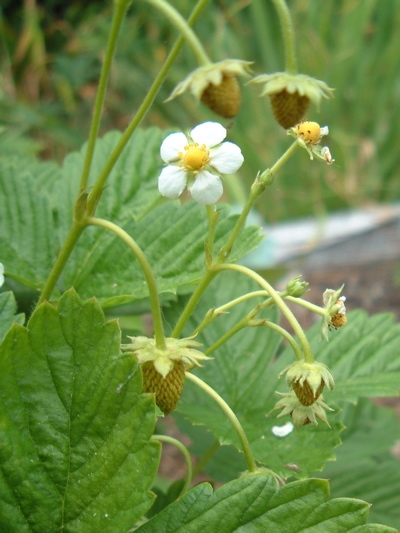
The Lifecycle of a White Strawberry
the berry-growing process
My strawberry plants are now well-developed enough for me to be able to describe to you how the berries grow and develop. If you look at the picture above, you can see all the stages of a growing alpine strawberry.
At first, the plants are all just leaves. Then stems form which have little buds on the end. I pinched those off through the end of June so that the plants would put all their energy into growing themselves and not start making fruit. This helps the plants have a more vigorous root system and more foliage, both of which should help them make more berries this first season.
Right away in early July, the first flowers started to form (essentially as soon as I stopped pinching them off) The flowers that form are white with yellow centers. They unfold and exist for a while before they drop all their petals.
After the petals fall off the flowers, the yellow center part remains and begins to grow. This is what will turn into the actual berry. The yellow part turns somewhat green as it gets bigger.
The green berries have a dense covering of seeds on the outside that also start out greenish in color. As the berries grow, they start to get paler in color, slowly turning white. The seeds go from tightly packed to having some space between them as the berry grows.
You'll know the berries are ready to pick when the seeds turn from green to brown. The berries also smell very strongly at this time and they easily are pulled off their stems. If a berry looks ripe but still seems strongly attached to its stem, let it keep growing for a bit longer
Alpine strawberries are "ever-bearing" which means they fruit for several months instead off one single harvest time. To help the plants produce more fruit, you have to pick it off and eat it as the summer progresses. This might mean you only get a handful at a time to eat so get ready to have a small snack, put them on a bowl of cereal or over ice cream.
White Strawberries & Allergies
For those who are allergic to strawberries, white or yellow types might not cause the same reactions. Read more about how these varieties don't contain the same proteins as the red types.
- Research Profile: Allergic to strawberries? Try a white one
For many people, the sight of a strawberry resting against a piece of chocolate cake is a sad one, indeed. Those who are allergic to strawberries cannot eat the fruit or anything that touches it. - The chemistry of strawberry allergy
Not everyone can enjoy the fresh strawberries in summer. Some experience an allergic reaction with itching and swelling in mouth and throat. Biochemists at Lund University have identified a strawberry allergen among the thousands of proteins in a str
The Joy of White Strawberries
The biggest question people have once their plants start to fruit is... "Well, what do I do with them?" Being ever-bearing, these plants make fruit for several months in small amounts versus one big crop harvest.
- Gardener's snack - when your plants are young, they are smaller and make less berries. So often you just get a few every few days or so. They don't keep well enough to save up, so sometimes it's just nice to eat them fresh off the plants while tending the garden.
- Salad garnish - Summer salads are great with just a light accent of fruit and a few of these lovelies are a wonderful surprise with a unexpectedly-bold taste.
- Breakfast or Dessert - If you have enough plants that are making lots of fruit, you can sometimes get a large enough harvested to serve them as the main feature of a fruit bowl.
- Jam/Canning - my eventual goal is to grow my plants large enough to split them off and expand my strawberry plot to be large enough to make a white strawberry jam. I figure this is a few years down the road at least.
If you've got questions about alpine strawberries, you can ask them and I'll do the best I can with answers. If you grow these lovely berrie yourself, share your best tricks and tips!






